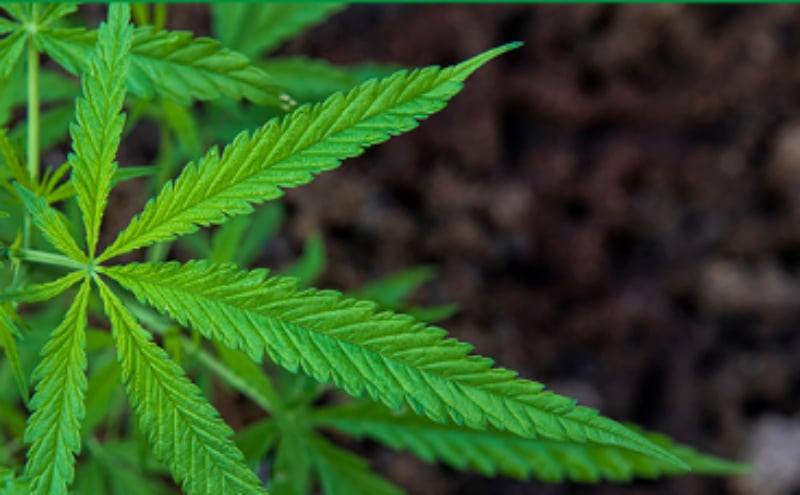
Cannabinoid Hyperemesis Syndrome
Authors: Lindsay Davis, DO; Stella Wong, DO
Date: January 4, 2024
A 44-year-old female presented to the emergency department with a chief complaint of vomiting for the past three days. The patient stated that her last oral intake was four days ago. She denied medication allergies, taking any prescribed medications, significant past medical history, and surgical history. Her last menstrual cycle was a week ago. She denied cigarette smoking and admitted to the occasional use of alcohol and regular use of marijuana. She stated that her last use of alcohol was a week ago, and her last use of marijuana was five days ago.
On examination, her vital signs were temperature 98.9ºF, respiratory rate 18, pulse 108, blood pressure 115/61, and pulse oximetry 97% on room air. She was actively vomiting on examination and was not able to cooperate, limiting the initial examination. She received one sublingual ondansetron 4 mg film in triage without improvement. Her EKG on arrival showed sinus tachycardia with a heart rate of 104, normal axis, normal intervals, and no STEMI. Labs were initiated at triage. Her complete blood count, magnesium, and lipase concentrations were all within normal limits. Her pregnancy test was negative. Her chemistry was significant for hypokalemia with a potassium of 3.3 mmol/L (normal range 3.5 to 5.1 mmol/L).
Normal saline and IV haloperidol 2 mg were ordered in the ED. A potassium replacement protocol (intravenous KCL 40 mEq, 2 doses) was ordered. On the first re-examination (2 hours into treatment), the patient was sleeping comfortably, with her tachycardia and vomiting having resolved. On the 2nd re-examination (4 hours after the initial treatment), the patient stated that her nausea had returned. She was then given another 2 mg of IV haloperidol. On the final re-examination (7 hours after the initial treatment), with her nausea resolved, she tolerated an oral intake challenge and was discharged.
Discussion
Epidemiology
Approximately 2.5% - 4.9% of the global population uses cannabis regularly.1,2 In the United States, cannabis use is becoming increasingly more common as more states legalize marijuana. In 2019, approximately 48 million Americans, or 18% of the US population, used cannabis at least once.3 Cannabis hyperemesis syndrome was first reported in the literature 20 years ago in 2004.4 Since then, numerous cases have been reported in the medical literature, and a general clinical picture is now associated with this syndrome. This syndrome involves nausea, vomiting, and abdominal pain or cramping. Symptoms are relieved by hot showers.1,2 The symptoms are typically resistant to typical antiemetics such as ondansetron.5 Cannabis hyperemesis syndrome (CHS) usually occurs in daily to weekly long-time users who have been using cannabis for over one year.1,2 There is a heavy male predominance, with 72.9% of cases reported in males.1 There is a lack of data on the prevalence and incidence of this syndrome.
Diagnostics
Patients with CHS typically undergo extensive and expensive testing, including invasive procedures, before a diagnosis of CHS is made. It can take 1–2 years before the diagnosis is made1 as the diagnosis is clinical and lacks formal diagnostic criteria. Unfortunately, many patients who are diagnosed with CHS are resistant to the idea that this is the cause of their symptoms.6 Many patients later diagnosed with CHS are initially diagnosed with cyclic vomiting syndrome. In patients who are hesitant to admit to marijuana use, diagnosis is often further delayed.1 Unlike cyclic vomiting syndrome, diagnostic criteria do not include vomiting frequency. In the emergency department setting, clinicians should consider evaluation for alternative diagnoses with basic blood work, an EKG, and urine pregnancy tests in female patients; further consideration should be made for cardiac testing in those with risk factors for atypical acute coronary syndrome presentations. Patients with CHS are at high risk of dehydration and electrolyte abnormalities. Differential diagnosis should remain broad to rule out life threats and alternative diagnoses for their presentation.
CHS Pathophysiology
The pathophysiology of CHS is not well understood, and many proposed mechanisms exist. Some include CB1 receptors in the GI tract having a pro-emetic effect.7 Others include chronic overstimulation of the endocannabinoid receptors and the transient receptor potential vanilloid-1 (TRPV1) nociceptor system. Over the past several decades, the THC concentration in cannabis products has increased significantly, with some products containing >95% THC (dabs and waxes), which is thought to contribute to CHS. These proposed mechanisms and others rely on the overall effect on the nausea and vomiting centers within the body.4 There is some initial data in rat studies that show THC is released from fat cells, where it can accumulate owing to its high lipophilicity, at a later time, causing marijuana intoxication. However, there does not appear to be any evidence of the possibility that CHS occurs in long-term marijuana users who stop and undergo weight loss or otherwise have conditions that would cause the release of stored cannabinoids from fat cells.8
Management
Management of CHS is targeted at symptomatic relief and stopping of the offending agent, THC use. Treatment of the acute symptoms in the emergency department includes IV fluids and antiemetics as needed. Overall, patients typically respond poorly to traditional antiemetics such as metoclopramide and ondansetron.4 Treatment ranges from droperidol or haloperidol to benzodiazepines or tricyclic antidepressants (TCAs), all of which have evidence for successfully treating symptoms. Several treatments with mixed evidence include diphenhydramine, dexamethasone, scopolamine, aprepitant, and fosaprepitant. Unfortunately, rigorous prospective studies are lacking to treat CHS. Most of the published literature is case studies or series, and the most common effective treatments include benzodiazepines and capsaicin. Although, caution should be used when treating CHS with any potentially addicting medications as these patients often already have cannabis use disorder increasing risk for addiction. Capsaicin is thought to work by activation of TRPV-1 and depletion or inactivation of substance P, this competes with THC preventing overstimulation of this system causing anti-emetic effect.9 Further, some evidence shows effective long-term treatment with TCAs.7
If the patient has a prolonged QTc interval, clinicians should consider treatment with benzodiazepines, dexamethasone, diphenhydramine, scopolamine, or other antiemetics that do not prolong the QTc interval.7 There is limited published experience with olanzapine for CHS treatment, but it has antiemetic properties and minimally prolongs the QTc, particularly compared to other antidopaminergic medications, such as haloperidol or droperidol. Olanzapine has the added benefit of lower rates of extrapyramidal side effects.10
Although droperidol is sometimes used for CHS, published experience is primarily in non-peer-reviewed online sources. There is a lack of high-quality peer-reviewed articles and scientific research evaluating droperidol for use in CHS, mainly because it was not available during the period CHS was initially recognized as a complication of THC use. Droperidol was only reintroduced to the US market for the treatment of nausea in 2019 after being banned for safety concerns relating to arrhythmias from QTc prolongation.11 While some meta-analyses show some benefit, it does not appear to be as efficacious as other more commonly utilized treatments such as benzodiazepines or haloperidol.7
Resources
- Sandhu, G., et al., Prevalence of cannabinoid hyperemesis syndrome and its financial burden on the health care industry. Proc (Bayl Univ Med Cent), 2021. 34(6): p. 654-657.
- Sorensen, C.J., et al., Cannabinoid Hyperemesis Syndrome: Diagnosis, Pathophysiology, and Treatment-a Systematic Review. J Med Toxicol, 2017. 13(1): p. 71-87.
- Centers for Disease Control and Prevention. (2021, June 8). Data and statistics. Marijuana and Public Health. https://www.cdc.gov/marijuana/data-statistics.htm Accessed 2/1/2024.
- Chu, F. and M. Cascella, Cannabinoid Hyperemesis Syndrome, in StatPearls. 2024: Treasure Island (FL).
- Kim, H.S. and A.A. Monte, Colorado Cannabis Legalization and Its Effect on Emergency Care. Ann Emerg Med, 2016. 68(1): p. 71-5.
- Collins, A.B., et al., "I still partly think this is bullshit": A qualitative analysis of cannabinoid hyperemesis syndrome perceptions among people with chronic cannabis use and cyclic vomiting. Drug Alcohol Depend, 2023. 246: p. 109853.
- Richards, J.R., et al., Pharmacologic Treatment of Cannabinoid Hyperemesis Syndrome: A Systematic Review. Pharmacotherapy, 2017. 37(6): p. 725-734.
- Gunasekaran, N., et al., Reintoxication: the release of fat-stored delta(9)-tetrahydrocannabinol (THC) into blood is enhanced by food deprivation or ACTH exposure. Br J Pharmacol, 2009. 158(5): p. 1330-7.
- Aziz, A., et al., Topical Capsaicin for Treating Cannabinoid Hyperemesis Syndrome. Case Rep Gastrointest Med, 2020. 2020: p. 8868385.
- Hashimoto, H., et al., Olanzapine 5 mg plus standard antiemetic therapy for the prevention of chemotherapy-induced nausea and vomiting (J-FORCE): a multicentre, randomised, double-blind, placebo-controlled, phase 3 trial. Lancet Oncol, 2020. 21(2): p. 242-249.
- Kramer, K.J., The Surprising Re-emergence of Droperidol. Anesth Prog, 2020. 67(3): p. 125-126.



